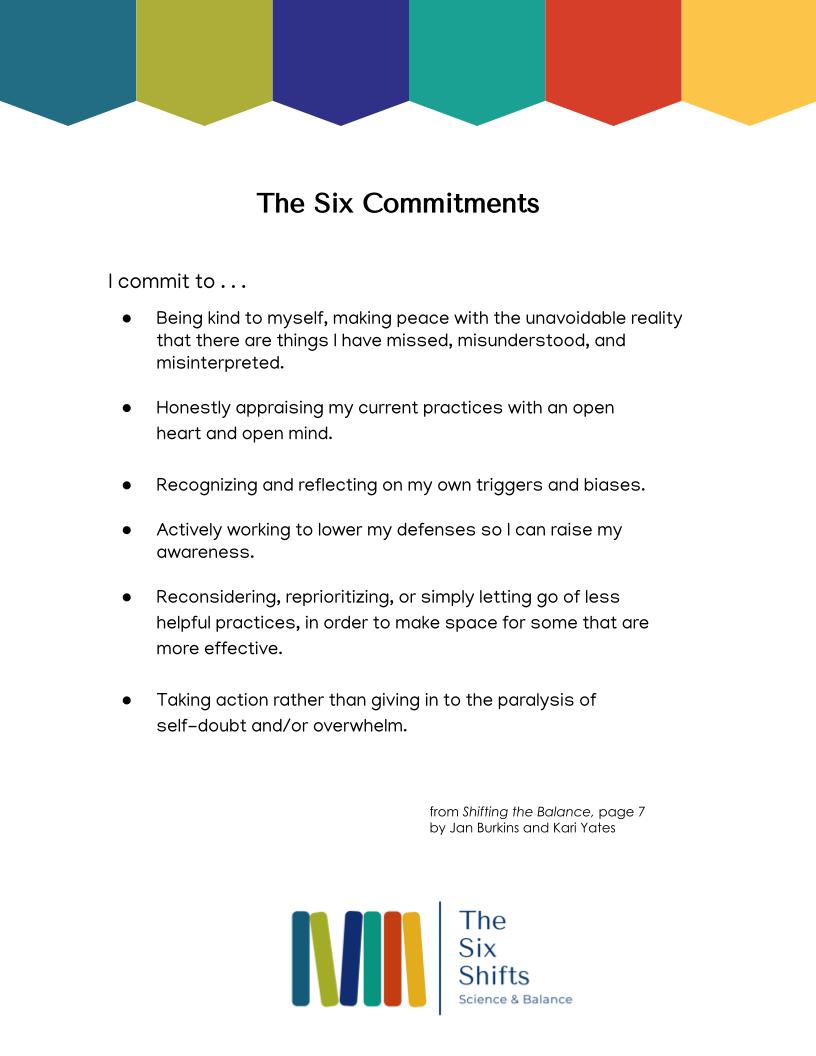

The work we invite you into is not purely academic or technical in nature. It can also be emotionally taxing work, especially when it calls on us to reevaluate long-held beliefs or practices. As you commit to take an honest second look at practices in your system, school, or classroom – in order to spot misunderstandings, misinformation, and missed opportunities – we hope you will find grace for yourself. To that end, we share with you the commitments we crafted for ourselves as we stepped into this vulnerable work.
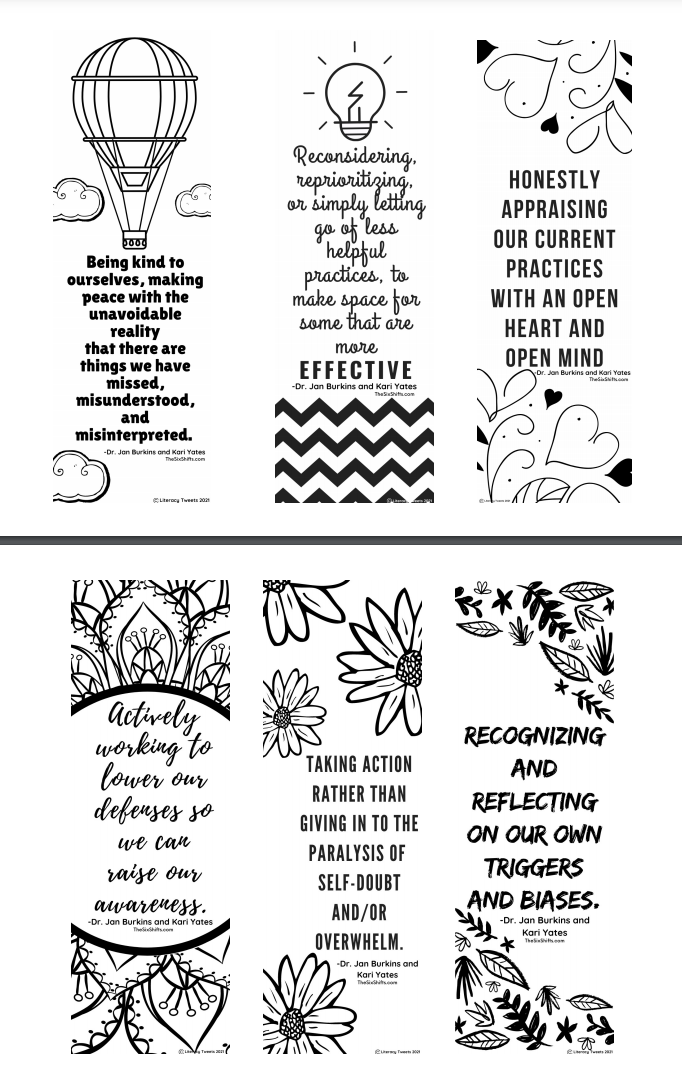
Would you like to have a fun way to access the Six Commitments or share them with colleagues? These unique printable, “color-me” bookmarks are designed and generously shared by Kim Harkreader. Thanks, Kim! Where might you place these in your world as a reminder to give yourself grace? How will you share these little goodies with those who support and inspire you? Which commitment will you focus on today?
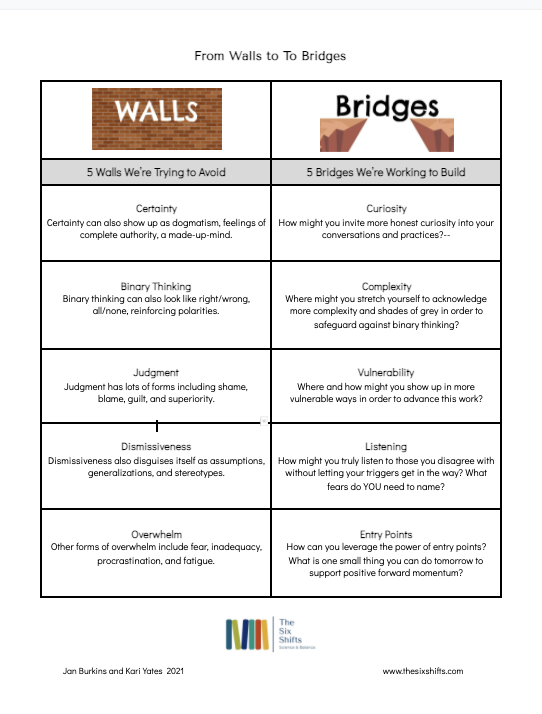
Our goal is to create momentum, one conversation and one changed practice at a time. If you’re working to build momentum but running into barriers as people with diverse approaches struggle to hear and understand each other, we invite you to download this tool. In this one-pager we share the five walls we’re trying hard to avoid in our work, and the five bridges we’re working to build.
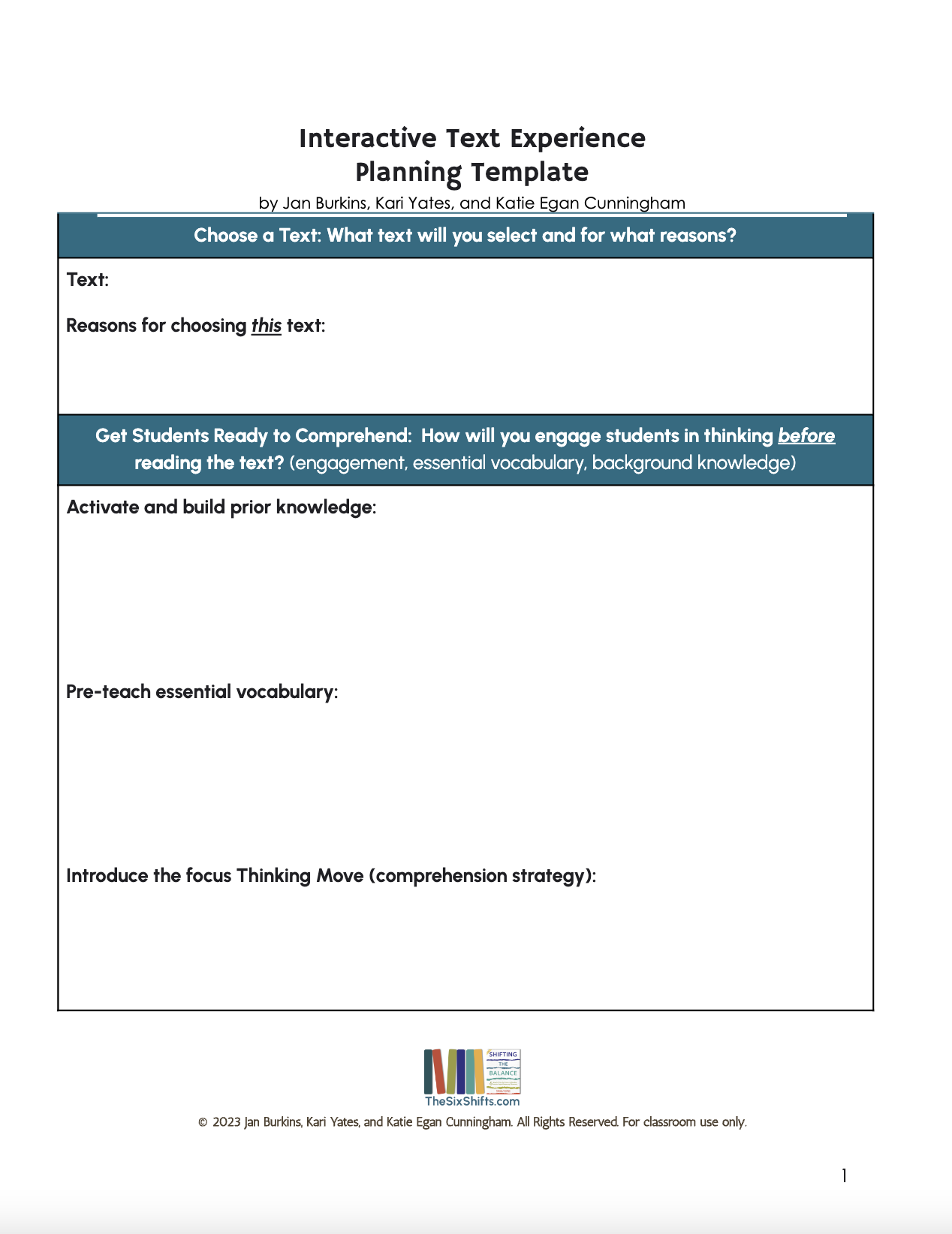
Are you looking for a simple tool that will help you maximize read aloud and shared reading? We’ve built this planning template to support and streamline planning for read aloud and shared reading. This tool will help you design purposeful and engaging interactive text experiences that will help students unlock the meaning of texts and arrive at a deeper understanding. We’ve broken planning down into a few simple steps – before, during, and after reading – to make planning efficient and effective. (From Shift 1 in Shifting the Balance; 6 Ways to Bring the Science of Reading into the Upper Elementary Classroom .)
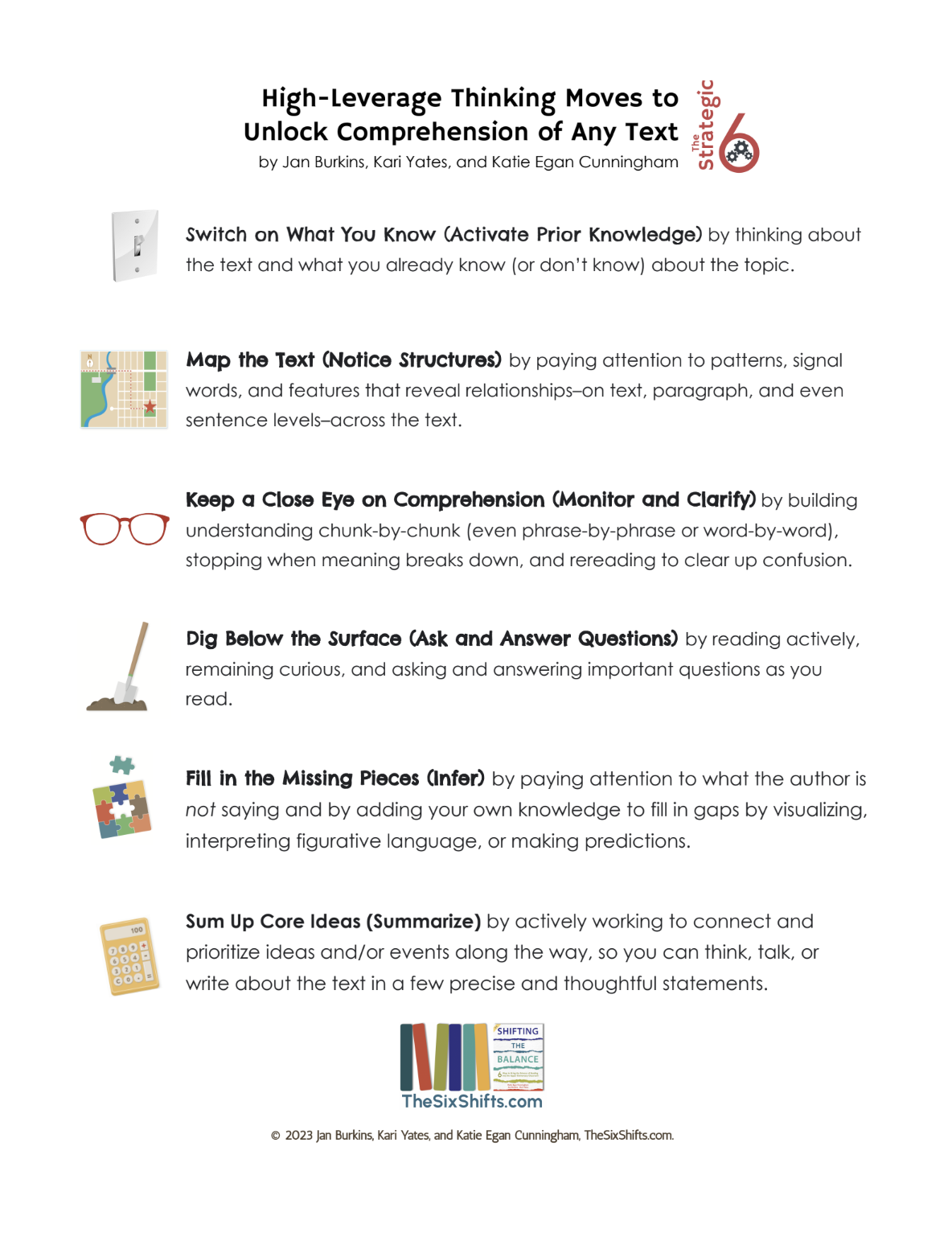
Strategic readers use thinking moves – or in the head processes – to help them unlock the meaning of texts. We’ve distilled the extensive body of research on the most high-leverage comprehension strategies to help you provide comprehension instruction that’s actionable and focused on the strategies that matter most. We’ve given these “thinking moves” kid-friendly names, memorable icons, and simple definitions to help simplify and strengthen your strategy instruction. And you can choose between a color format or black-and-white. Pair our Strategic Six Thinking Moves with our Interactive Text Experience Planning Template and to help your students’ read actively and comprehend deeply. (From Shift 2 in Shifting the Balance; 6 Ways to Bring the Science of Reading into the Upper Elementary Classroom .)
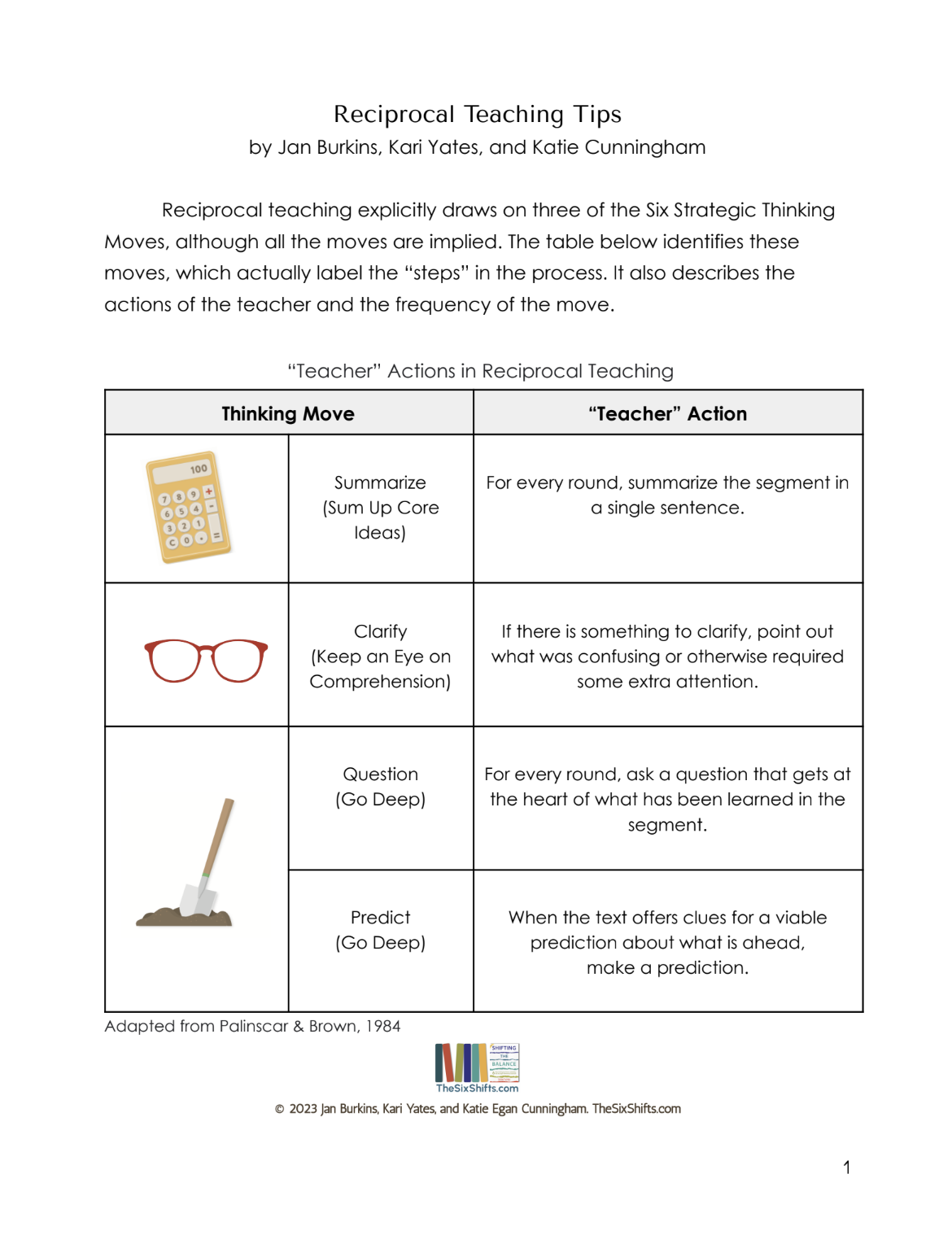
Reciprocal teaching (Palinscar and Brown, 1984) draws on four key thinking moves. In this tool, we break down the thinking moves the “teacher” actions to help you make reciprocal teaching a regular part of your instruction. In this document, you’ll find a step-by-step process for modeling this reciprocal teaching for your students, setting them up for success to learn with and from each other as readers. (From Shift 1 in Shifting the Balance; 6 Ways to Bring the Science of Reading into the Upper Elementary Classroom .)